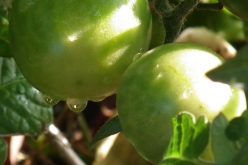Molecular Nutrition: Approaching A Primal Diet
After President Kennedy’s announcement of the Apollo Project, I wanted to be an astronaut and the first one on the moon. As time passed and my career aspirations came into perspective, I wondered what one would take for nutrition on long, distant space travel in order to stay healthy. There was also a desire to find alien life. But that’s another story.
Unfortunately, I was beaten to the moon. With that in mind, I moved from the flatlands of Arkansas near Memphis and entered the University of Arkansas, in this wonderful part of the world, to study microbiology.
My place ended up being in family practice medicine doing my best at helping the ill get well, but eventually realizing that I had not been trained to, nor was I helping, to prevent disease.
Fifteen years into my practice, it became obvious a poor understanding and poor information from the Agriculture Department [not the Health Department] and toxic rules from the Food and Drug Administration are the cause of more than 75 percent [my estimate] of the chronic diseases we, as physicians, deal with. I abandoned the food pyramid/plate and started to produce my own information on nutrition, which evolved from, or more specifically was obtained from, molecular nutrition research.
Unfortunately, there are few schools that teach molecular nutrition in this country, and at the same time, there seems to be a tendency to hide this information from the general population of the U.S. Like the aliens, this is another story that we won’t touch on here.
That’s when my research and experience with molecular nutrition began. Molecular nutrition can be thought of as a genetic approach to nutrition. It might also be considered the ultimate primal diet with perhaps some contemporary differences in handling and preparation of food.
I wouldn’t expect anyone to be able to eat this way unless they were very compulsive but the closer you get to it the healthier people seem to be. I’ve been able to help people get off more medication in the last 15 years than I ever thought possible. Previously, I only added medication because that was what I was trained to do; treat disease not prevent it. In practice I have found it beneficial to keep this information simple so I keep it on two sides of one piece of paper in a simple outline. The main points of this information include the following. Read it and weep.
If we look at human time as a 12-inch ruler and 2013 is at 12 inches and our existence as humans began at zero, the age of foods can be placed along the ruler according to how old they are as foods for our genetics to adopt.
 1] At 12 inches we find additives in our food that include artificial sweeteners, flavors, dyes, preservatives, most trans fats, antibiotics, growth hormones [not human], too much omega 6 oils, pesticides, and many more chemicals I can’t list here. They are toxic and should be avoided like the plague. Soft drinks would also be at this point. Who know all
1] At 12 inches we find additives in our food that include artificial sweeteners, flavors, dyes, preservatives, most trans fats, antibiotics, growth hormones [not human], too much omega 6 oils, pesticides, and many more chemicals I can’t list here. They are toxic and should be avoided like the plague. Soft drinks would also be at this point. Who know all
the chemicals in these products with “secret formulas.” If you want to get sick fast drink diet Mountain Dew. Unfortunately I can’t even find candy I feel comfortable eating. Aspartame is probably one of the worst chemicals when looking at what it and its metabolites do and the amount consumed. It’s like putting sand in your gas tank but it takes longer to shut our metabolism down due to the amazing ability of our body to detoxify itself. If these chemicals are continuously taken in they will eventually cause disease. It also takes a long time, decades or longer to turn a disease around. You must read labels.
 2] Due to genetics the most recent foods in human history are tolerated less than the older foods. The most recent foods at about 11 ½ inches [1000-10,000 years ago] on the stick are dairy, grains, and bananas. This is not long in genetic time. Dairy isn’t needed for calcium, vitamin d, or for that reason for any other reason. Even baby cows give it up. By the way the dairy lobby is or is nearly the oldest in the country. The dairy lobby has done a good job at convincing us it is necessary. Caucasians developed dairy around 2000 years ago in northern Europe and can tolerate lactose at only 70% and this falls off with age. Dairy has the worst saturated fat of the 4 types of saturated fat we tend to eat, and it has more inflammatory proteins than older foods. I also suspect there may be a problem with bovine growth hormones. Other races have only had it less than 100 years and tolerate dairy’s components even less. Grain is easy to raise in large quantities for the growing world population but it has one of the highest glycemic [sugar] loads of any food. Why do we feed animals grain? It’s cheap, but due to the glycemic index puts weight on fast and markedly increases omega 6 fat levels, which pushes inflammation and increases coagulation and blood pressure. Wheat, barley, and rye also have gluten, which is continuing to show up as the cause or pusher of several inflammatory diseases and may well be somewhat responsible for or additive to numerous others. Bananas are very recent genetically as a human food human and have similar sugars as grains and therefore push weight gain. These foods are cheap and we do like them. Part of the reason we like them is that we are used to them. Their sugars, and for that matter the sweet taste of anything, causes hunger. Some people like heroin, and if you eat cheap food you’ll eventually take expensive drugs.
2] Due to genetics the most recent foods in human history are tolerated less than the older foods. The most recent foods at about 11 ½ inches [1000-10,000 years ago] on the stick are dairy, grains, and bananas. This is not long in genetic time. Dairy isn’t needed for calcium, vitamin d, or for that reason for any other reason. Even baby cows give it up. By the way the dairy lobby is or is nearly the oldest in the country. The dairy lobby has done a good job at convincing us it is necessary. Caucasians developed dairy around 2000 years ago in northern Europe and can tolerate lactose at only 70% and this falls off with age. Dairy has the worst saturated fat of the 4 types of saturated fat we tend to eat, and it has more inflammatory proteins than older foods. I also suspect there may be a problem with bovine growth hormones. Other races have only had it less than 100 years and tolerate dairy’s components even less. Grain is easy to raise in large quantities for the growing world population but it has one of the highest glycemic [sugar] loads of any food. Why do we feed animals grain? It’s cheap, but due to the glycemic index puts weight on fast and markedly increases omega 6 fat levels, which pushes inflammation and increases coagulation and blood pressure. Wheat, barley, and rye also have gluten, which is continuing to show up as the cause or pusher of several inflammatory diseases and may well be somewhat responsible for or additive to numerous others. Bananas are very recent genetically as a human food human and have similar sugars as grains and therefore push weight gain. These foods are cheap and we do like them. Part of the reason we like them is that we are used to them. Their sugars, and for that matter the sweet taste of anything, causes hunger. Some people like heroin, and if you eat cheap food you’ll eventually take expensive drugs.
3] At perhaps 9 inches on the ruler of time [100,000 years +] we began eating legumes [beans, peas, soy, and peanuts]. These are high glycemic index [weight gain] foods and are more inflammatory and allergenic than older foods. Coffee, tea, and chocolate can probably be found near this point in the time line. Certainly these are healthier than soft drinks.
4] Meat of various kinds are older foods but the meat we eat now and the quantity and quality of meat is markedly different than what we ate as hunter gatherers which is how we lived for most of our existence.
 5] At the beginning of the ruler are fruits, nuts, and vegetables — root leafy and cruciferous–, eggs, and many other foods we don’t typically eat in the west. These are the oldest foods that have the highest quantity of antioxidants [natural medicines]. We need these foods more than others. Unfortunately mass production of these foods, new genetic variations, and fertilization methods have given us a good quantity of pretty, tasty, foods unfortunately depleted of vitamins and minerals to keep us healthy, as well as extra pesticides and fungicides for our systems to have to attempt to detoxify. Some of these chemicals, similar to lead, are difficult to get rid of.
5] At the beginning of the ruler are fruits, nuts, and vegetables — root leafy and cruciferous–, eggs, and many other foods we don’t typically eat in the west. These are the oldest foods that have the highest quantity of antioxidants [natural medicines]. We need these foods more than others. Unfortunately mass production of these foods, new genetic variations, and fertilization methods have given us a good quantity of pretty, tasty, foods unfortunately depleted of vitamins and minerals to keep us healthy, as well as extra pesticides and fungicides for our systems to have to attempt to detoxify. Some of these chemicals, similar to lead, are difficult to get rid of.
 6] At the beginning of the ruler of time, or perhaps before it, we find water. The strongest current recommendation is to consume 1 milliliters/ calorie consumed or another way to look at it is to take in 30-milliliters/ kilogram of body weight. Of course this would need to be adjusted just as some foods need to be avoided when one has certain diseases.
6] At the beginning of the ruler of time, or perhaps before it, we find water. The strongest current recommendation is to consume 1 milliliters/ calorie consumed or another way to look at it is to take in 30-milliliters/ kilogram of body weight. Of course this would need to be adjusted just as some foods need to be avoided when one has certain diseases.
It is probably a good idea to take vitamins but I would only recommend food-based vitamins. Synthetic vitamins from my research are not good in general but there may be a benefit from specific high quality synthetic vitamins if they cannot be obtained from food or food-based vitamins. Nutrition is such a large complex subject that the above information is only an easy way to think of it and by no means covers the subject.
Enjoy.










